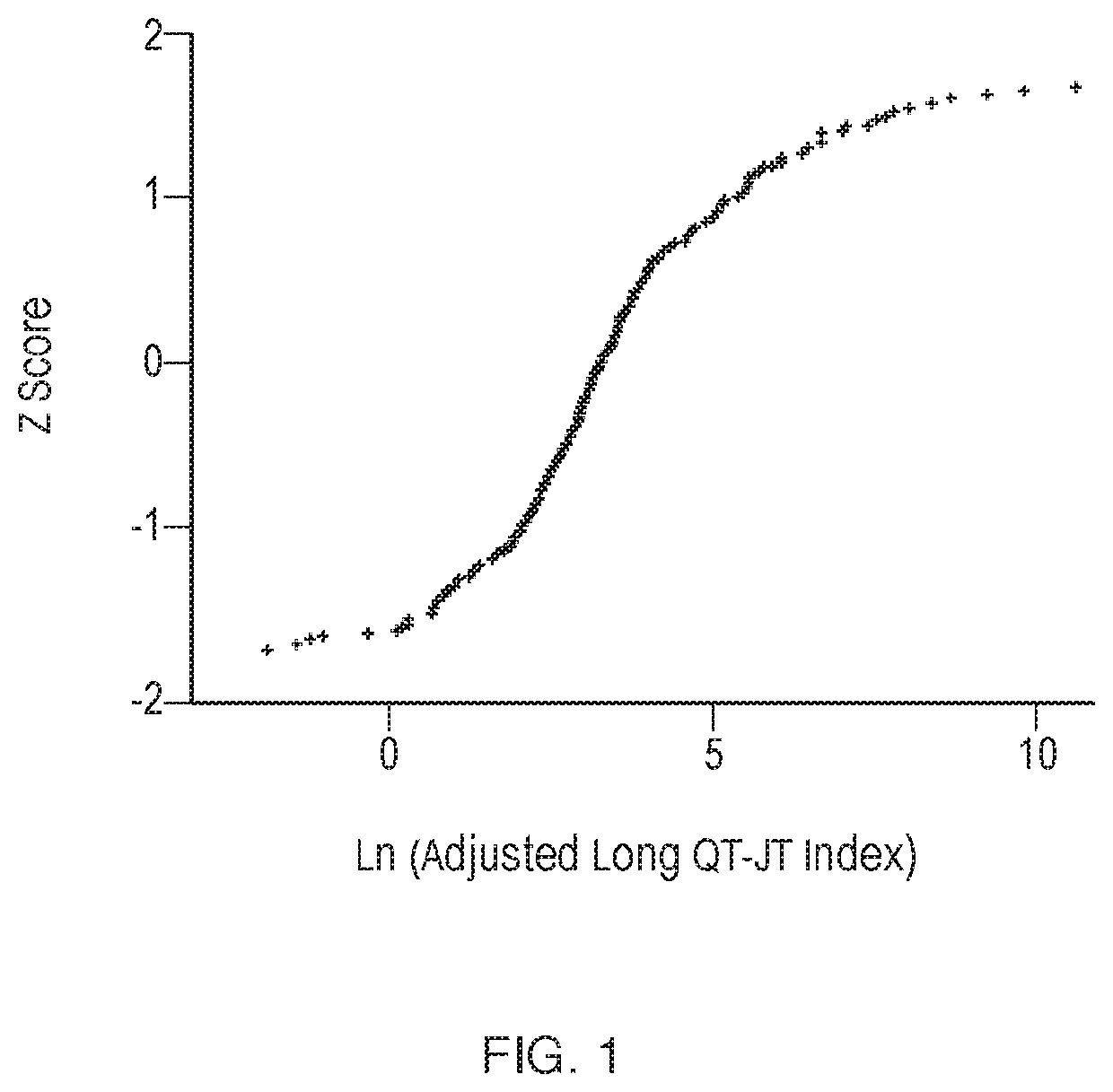Treatment methods having reduced drug-related toxicity and methods of identifying the likelihood of patient harm from prescribed medications
a treatment method and drug-related toxicity technology, applied in the direction of drug compositions, diagnostic recording/measuring, instruments, etc., can solve the problems of affecting the heart's ability to regain its basic membrane potential, and achieve the effects of increasing the risk of long qt syndrom
- Summary
- Abstract
- Description
- Claims
- Application Information
AI Technical Summary
Benefits of technology
Problems solved by technology
Method used
Image
Examples
example 1
n of Drug-Specific LQTS Index with Terfenadine
[0253]Terfenadine is a non-sedating H1-antagonist that has been associated with several cases of QT prolongation and Torsades de Pointes, starting in the 90's. The drug was removed from the US market in January of 1997. Using pharmacological characteristics of terfenadine, the LQTS Index is calculated, which may be described as the sum of K1+K2+K3−K4 (where K4 is either a 0 or a subtraction of 5 from the sum of K1, K2, and K3).
[0254]Calculating LQTS index for terfenadine yields the following:
K1=(0.016*1000) / (3.18*((100−97) / 100)*(381.6 / 127.20)*(100 / 5))
[0255]K2=0
[0256]K3=0
[0257]K4=0
[0258]The computed LQTS index for terfenadine is therefore 2.795. This value is lower than the determined threshold for risk (15) and exemplifies a drug with high risk of QT prolongation and drug-induced Torsade de Pointes.
example 2
n of Long QT-JT Index for 155 Drugs
[0259]A drug specific LQTS index was calculated for 155 drugs as demonstrated in Example 1. The Z-score distribution of values obtained for each of these drugs was then plotted. Drugs were also categorized based on CredibleMeds characterization (www.crediblemeds.org) to either High risk, Conditional risk, Low risk, or Undetermined risk. A specificity and sensitivity analysis performed demonstrated that a threshold value 15 was associated with maximum specificity and maximum sensitivity (see FIG. 1).
example 3
n of a Patient-Specific LQTS Score in an Exemplary Female Patient
[0260]An exemplary female patient with atrial fibrillation was being treated with sotalol (rhythm control of atrial fibrillation) and ciprofloxacin (urinary tract infection). Her potassium level was at 3.1 meq / L and she had a measured QTc at 560 msec.
[0261]FIG. 10 illustrates an exemplary data input screen for calculating a patient-specific LQTS score and the results of such score are shown below where the patient in FIG. 10 has an LQTS Score of 19.
[0262]LQTS Analysis Result: A total LQTS Score of 19 was estimated for this patient based on available information. This represents a precarious condition, which requires immediate attention. However, the Total LQTS Score could be higher if all risk factors were taken into consideration. The missing risk factors are: (1) magnesium level; and (2) heart rate.
[0263]Risk Factor 1: 0.5. QT interval is 10-15 milliseconds longer in women than in men throughout their life span. QTc ...
PUM
| Property | Measurement | Unit |
|---|---|---|
| voltage | aaaaa | aaaaa |
| weight percent | aaaaa | aaaaa |
| weight percent | aaaaa | aaaaa |
Abstract
Description
Claims
Application Information
 Login to View More
Login to View More - R&D
- Intellectual Property
- Life Sciences
- Materials
- Tech Scout
- Unparalleled Data Quality
- Higher Quality Content
- 60% Fewer Hallucinations
Browse by: Latest US Patents, China's latest patents, Technical Efficacy Thesaurus, Application Domain, Technology Topic, Popular Technical Reports.
© 2025 PatSnap. All rights reserved.Legal|Privacy policy|Modern Slavery Act Transparency Statement|Sitemap|About US| Contact US: help@patsnap.com



